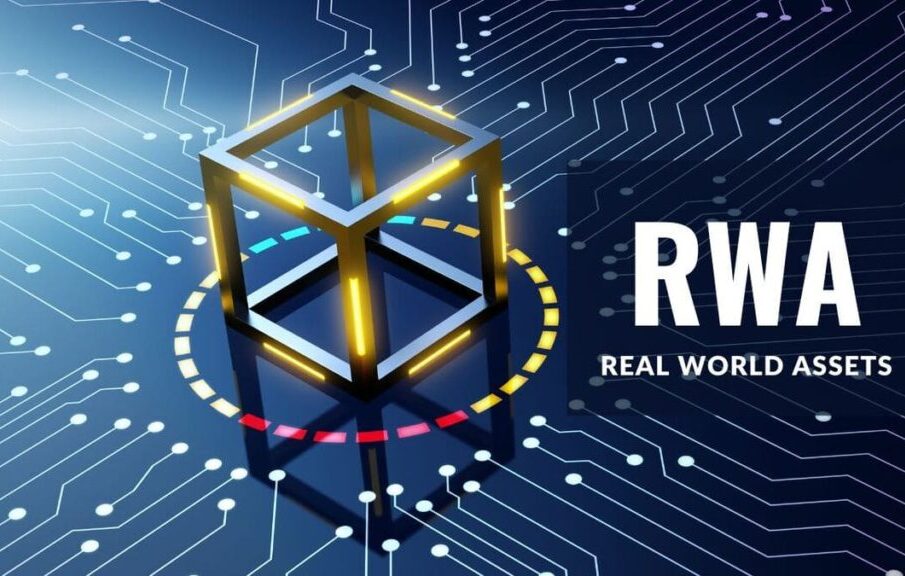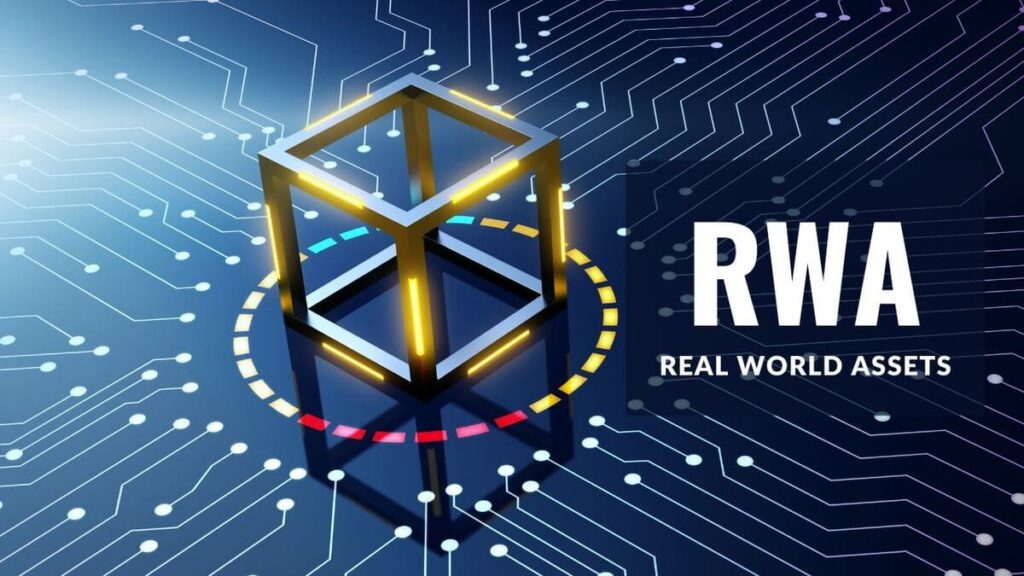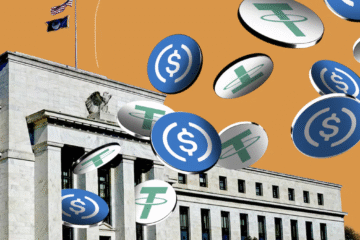RWA in 2025: Hype or Opportunity?

Real World Assets (RWAs) have surged back into the crypto spotlight in 2025, hailed as a potential “bull market engine” with a projected market size in the tens of trillions. Despite earlier FOMO in 2020–2021, RWA faded during the 2022 bear market. Why is it heating up again? Which projects are leading the charge? What challenges could derail its promise? This analysis peels back the layers of RWA to assess whether it’s overhyped or a genuine opportunity.
What Are RWAs?
RWAs are tokenized representations of real-world assets on a blockchain, bridging traditional finance (TradFi) with decentralized finance (DeFi). Unlike asset securitization, which connects assets to capital markets, RWA tokenization unlocks liquidity by making assets globally accessible via DeFi. Assets include:
- Tangible: Real estate, art, precious metals, commodities.
- Intangible: Stocks, bonds, invoices, insurance, fund shares.
Stablecoins like USDT, mapping fiat (e.g., USD) to the blockchain, are the most successful RWAs to date. In May 2025, the RWA market cap (excluding stablecoins) hit $38.8 billion, up from $15.2 billion in late 2024, with stablecoins adding over $200 billion.
How RWAs Work
RWA tokenization involves three steps:
- Asset Financialization: Define an asset’s economic value, ownership, and legality. Establish tokenizable rights (ownership, usage) and delivery mechanisms, adapting real-world assets to crypto frameworks. This goes beyond scanning PDFs or legal documents—it requires robust structuring.
- Data Trustworthiness: Digitize asset data and integrate it into smart contracts. Since blockchains only process on-chain data, oracles (e.g., Chainlink) feed off-chain asset values, ensuring accurate pricing. Privacy concerns arise due to blockchain transparency, addressed by zero-knowledge proofs (ZKPs) to balance public verifiability with confidentiality.
- Tokenization: Protocols issue tokens or NFTs to markets or specific investors, enabling liquidity. Tokens represent fractional ownership or rights, tradable on DeFi platforms.
The hardest parts? Before on-chain (validating off-chain assets) and after off-chain (settling or liquidating physical assets). Off-chain fraud risks and complex liquidation processes are major hurdles. Bridging these gaps is key to RWA’s success.
Why Is RWA Hot Again in 2025?
RWA’s resurgence isn’t just recycled hype—it’s driven by institutional momentum, market shifts, and a need for new narratives in a post-bear crypto landscape. Key drivers include:
Institutional Push
Traditional finance giants and DeFi protocols are championing RWAs. In 2025:
- BlackRock’s BUIDL fund, a tokenized real estate fund, holds $2.9 billion in assets, signaling institutional confidence.
- JPMorgan and Chainlink completed a cross-chain Delivery-vs-Payment (DvP) transaction, proving RWA infrastructure readiness.
- Hong Kong’s digital bond incentive scheme (up to HKD 2.5M subsidies) and the EU’s cross-border tokenization guidelines boost regulatory support.
Citi’s 2023 report projected a $4 trillion RWA market by 2030, a figure echoed by Boston Consulting Group’s $16 trillion estimate. Institutions see tokenization as a way to enhance liquidity and competitiveness for their vast asset portfolios (e.g., $127 trillion bond market, $362 trillion real estate market).
DeFi Yields vs. TradFi Rates
DeFi yields have stagnated, while low-risk TradFi assets like U.S. Treasuries offer better returns. In 2025:
- Aave’s USDT deposit rate: ~3%.
- Compound’s USDT rate: ~2.5%.
- MakerDAO’s DAI rate: ~3.5%.
- U.S. Treasury 1-year yields: ~5.3%, outpacing DeFi.
On-chain Treasury products, yielding ~4.23% with $600 million in TVL, attract risk-averse investors seeking stable returns insulated from crypto volatility.
Crypto’s Need for a New Narrative
Post-2022 bear market, the crypto industry craves fresh stories to reignite enthusiasm. Bitcoin Ordinals, ETFs, and ZKPs filled the gap in 2023–2024, but RWA’s TradFi-DeFi bridge offers a compelling vision. Posts on X reflect this excitement, with users calling RWA a “trillion-dollar narrative” for 2025.
Top RWA Projects in 2025
As of May 2025, the RWA sector’s market cap (excluding stablecoins) is $38.8 billion, a fraction of DeFi’s $440 billion, highlighting massive growth potential. Below are six leading projects, updated with recent data.
MakerDAO (MKR)
- Market Cap: ~$1.2 billion.
- Overview: A DeFi lending pioneer, MakerDAO mints DAI via overcollateralized crypto loans. Since 2020, it has integrated RWAs, with 48% of its assets and >50% of revenue from RWAs (e.g., public bonds).
- 2025 Update: MakerDAO expanded real estate-backed DAI loans, partnering with Propy for compliant property tokenization.
Synthetix (SNX)
- Market Cap: ~$900 million.
- Overview: A synthetic asset platform tracking real-world prices (stocks, commodities). Despite a TVL drop from $2.9 billion (2021) to $400 million, a $20M DWF Labs investment in 2025 aims to boost liquidity.
- 2025 Update: Synthetix launched tokenized U.S. equities, leveraging Chainlink oracles for real-time data.
Centrifuge (CFG)
- Market Cap: ~$200 million.
- Overview: A credit protocol tokenizing SME assets (e.g., invoices) for liquidity. Its Tinlake app hosts 17 asset pools, with $421M in financed assets. It powers RWA lending for MakerDAO and Aave.
- 2025 Update: Centrifuge’s Anemoy platform simplifies RWA tokenization, attracting $700M TVL.
Reserve Rights (RSR)
- Market Cap: ~$180 million.
- Overview: A stablecoin protocol minting USD-pegged RTokens (e.g., eUSD, hyUSD). Backed by Coinbase and Sam Altman, it focuses on financial inclusion.
- 2025 Update: Reserve launched tokenized microfinance loans in Africa, with $50M in assets.
Ribbon Finance (RBN)
- Market Cap: ~$150 million.
- Overview: Combines options, futures, and fixed-income for stable DeFi yields, focusing on public bonds. Backed by Coinbase and Dragonfly.
- 2025 Update: Ribbon integrated tokenized T-Bills, yielding 5.1% APY, attracting family offices.
Polymesh (POLYX)
- Market Cap: ~$130 million.
- Overview: A permissioned Layer-1 for RWAs, requiring KYC for all participants. With 3.9K verified users and 42 node operators (including Binance), it ensures regulatory compliance.
- 2025 Update: Polymesh partnered with Mantra to enhance cross-chain RWA liquidity via IBC.
Trend: Investors favor intangible assets (bonds, stablecoins) over tangible ones (real estate, art), reflecting trust in liquid, regulated markets.
Is RWA a Repeat of “The Boy Who Cried Wolf”?
RWA’s 2021 peak saw weekly transaction volumes of $250M, now down to ~$50M despite renewed hype. Is this another false dawn?
Evidence of Hype
- Historical Volatility: RWA’s 2021 surge fizzled in the bear market, suggesting speculative froth.
- Uneven Growth: Bonds and stablecoins dominate, while real estate and art lag, indicating narrow market interest.
- X Sentiment: Posts on X tout “trillion-dollar” potential, but retail engagement remains low compared to institutional activity.
Evidence of Opportunity
- Institutional Backing: BlackRock, JPMorgan, and Hong Kong’s policies signal long-term commitment.
- Market Size: A $38.8B market in 2025 could scale to $5–16T by 2030, per industry estimates.
- Tech Advances: Chainlink’s CCIP and Mantra’s LEEP protocol improve cross-chain liquidity and compliance.
Challenges Facing RWA
RWA’s potential is vast, but hurdles remain:
Regulatory Complexity
- Issue: Varying global regulations (e.g., SEC for securities, CFTC for commodities) complicate compliance. KYC/AML requirements deter some investors.
- Progress: The EU’s MiCA and Hong Kong’s frameworks provide clarity, but global standardization lags.
- Example: Propy’s U.S.-compliant real estate tokenization shows regulatory navigation is possible but costly.
Technical Infrastructure
- Privacy: KYC’d user data needs protection. ZKPs are promising but not universally adopted.
- Data Bridging: Oracles must sync off-chain and on-chain data accurately. Chainlink dominates, but single-point failures are a risk.
- Settlement: Off-chain asset delivery (e.g., property deeds) is slower than on-chain transactions, creating friction.
Asset Valuation and Authenticity
- Valuation: Tangible assets (e.g., art) lack standardized pricing, unlike bonds.
- Fraud: Off-chain data can be falsified. Robust audits and oracles are critical but not foolproof.
- Solution: Protocols like Tokeny provide compliance infrastructure, but scaling remains a challenge.
Uneven Project Development
- Imbalance: Bonds/stablecoins overshadow other assets, risking over-reliance on macro conditions. If DeFi yields rise, RWA’s appeal could wane.
- Need: More diverse projects (e.g., tokenized carbon credits, art) to balance the ecosystem.
Default Risks
- Issue: Off-chain collateral liquidation is complex. Centrifuge, Maple, and TrueFi reported $66M in bad debt, with a 1.6% default rate.
- Mitigation: Overcollateralization and legal frameworks (e.g., SPVs) help, but enforcement varies by jurisdiction.
Centralization Concerns
- Issue: KYC, custody, and asset verification often rely on centralized entities, clashing with DeFi’s ethos.
- Progress: Mantra’s permissioned-yet-DeFi model and Solana’s SPL Governance integrate compliance without full centralization.
- Risk: Single-point trust failures could erode confidence.
Future Outlook
RWA’s promise lies in unlocking liquidity for illiquid markets ($127T bonds, $362T real estate). Its ability to bridge TradFi and DeFi could redefine finance, offering:
- Fractional Ownership: Lowering entry barriers for retail investors.
- 24/7 Markets: DEXs like Mantra’s LEEP enable constant trading.
- Transparency: Blockchain ensures auditable ownership.
However, challenges temper optimism:
- Retail Adoption: Institutions dominate; retail lacks accessible entry points.
- Regulatory Lag: Global frameworks are years away.
- Tech Maturity: Privacy, oracles, and settlement need refinement.
Verdict: RWA is both hype and opportunity. The hype stems from speculative buzz and institutional FOMO, amplified by X posts predicting trillion-dollar markets. Yet, the opportunity is real—tokenization can transform finance, backed by $38.8B in market cap and growing institutional infrastructure. Success hinges on regulatory clarity, technical robustness, and broader asset diversity. Unlike past crypto booms driven by retail mania, RWA’s top-down institutional push may sustain it, but retail inclusion will determine its longevity.
For investors, focus on diversified exposure (e.g., Chainlink for oracles, Centrifuge for credit, Propy for real estate) and monitor regulatory shifts. RWA’s road is long, but its destination could reshape global markets.










